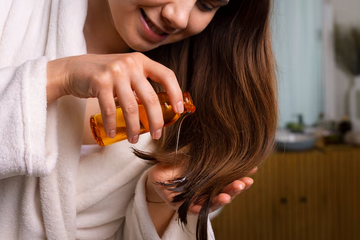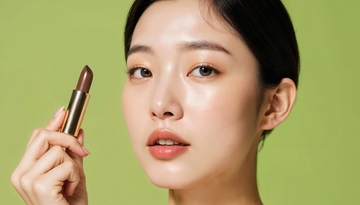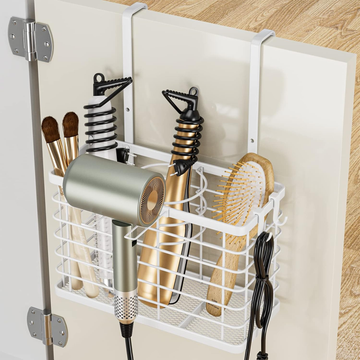Smooth, strong, shiny—who doesn’t want their hair to tick all the boxes? The secret might just be simpler than you think. Oils have been a go-to for centuries, offering hydration, protection, and that enviable healthy glow. Oil hair care is a game-changer when dealing with everything from dryness to frizz, or simply wanting to level up your routine.
From tried-and-true staples like olive oil hair care products to lighter oils perfect for daily use, there’s an option for every hair type and concern. Ready to give your strands the care they deserve? Let’s break down the benefits, best oils, and simple ways to incorporate them into your routine—because great hair days are worth it.
Best oils for different hair types
Not all oils are created equal, and the right one can make a world of difference for your hair. Whether you’re battling dryness, seeking shine, or aiming to repair damage, there’s an oil tailored to your unique needs. Let’s break down the best options and how they cater to specific hair concerns.
Olive oil, the hydration hero
When it comes to deep hydration, olive oil reigns supreme. This rich oil has been a staple in hair care routines for centuries, and for good reason. Packed with antioxidants, vitamins A and E, and healthy fatty acids, olive oil works overtime to nourish and protect. But it’s not just about hydration—olive oil also promotes scalp health by soothing irritation and fighting dandruff.
Why it works:
Olive oil’s emollient properties help smooth the outer hair cuticle, locking in moisture and creating a barrier against environmental stressors like pollution and UV rays. It penetrates the hair shaft, repairing damage from within, and leaves your strands feeling soft, silky, and manageable.
How to use it:
– For a quick hydration boost, warm a few tablespoons of olive oil and apply it to dry hair, focusing on the mid-lengths and ends.
– Use a wide-tooth comb to distribute the oil evenly, then wrap your hair in a warm towel. Leave it on for 30 minutes before rinsing out.
– You can also find olive oil hair care products, such as deep-conditioning masks and leave-in treatments, for a more convenient option.
Best for:
Coarse, brittle, or dry hair types, as well as those experiencing scalp dryness or dandruff.
Argan oil, the damage fixer
Dubbed “liquid gold” for a reason, argan oil is a miracle worker for hair that’s been through the wringer. Whether it’s heat styling, chemical treatments, or environmental damage, argan oil can help restore your hair’s natural strength and shine. Rich in antioxidants, essential fatty acids, and vitamin E, this multitasking oil helps repair damage while protecting against future wear and tear.
Why it works:
Argan oil strengthens the hair’s outer cuticle layer, which is crucial for maintaining elasticity and reducing breakage. It also seals in moisture, making hair less prone to split ends and tangling. Plus, its smoothing properties help reduce frizz and give your hair that sleek, polished look.
How to use it:
– Apply a small amount of pure argan oil to damp hair before styling to protect against heat damage.
– For an intensive repair treatment, work it into your ends and leave it overnight.
– Many argan oil-infused hair care products, like shampoos, conditioners, and serums, offer an easy way to incorporate this powerful ingredient into your routine.
Best for:
Damaged, color-treated, or brittle hair in need of serious repair.
Coconut oil, shine like never before
Few ingredients are as versatile as coconut oil. Known for its deep conditioning properties, coconut oil is a go-to for boosting shine and taming frizz. Thanks to its unique molecular structure, it penetrates deep into the hair shaft, providing hydration from the inside out. It’s especially beneficial for those with wavy or curly hair, as it helps define curls while adding a glossy finish.
Why it works:
Lauric acid, a medium-chain fatty acid found in coconut oil, is the secret to its effectiveness. This acid helps reduce protein loss in both damaged and undamaged hair, which is key for maintaining strength and preventing breakage. Additionally, coconut oil has antifungal properties that can help keep your scalp healthy and free of buildup.
How to use it:
– For an ultra-hydrating hair mask, apply melted coconut oil to clean, dry hair and leave it on for at least an hour (or overnight for maximum impact).
– Mix a teaspoon of coconut oil with your favorite conditioner for an added shine boost.
– Look for coconut oil-infused hair products like leave-in sprays and styling creams for an easy way to reap the benefits.
Best for:
Dull, frizzy, or curly hair that needs a little extra shine and definition.
Jojoba oil, lightweight and versatile
If you’re hesitant about adding oil to your routine, jojoba oil can be a great place to start. Known for its lightweight texture and non-greasy feel, jojoba oil mimics the natural sebum produced by your scalp. This makes it an excellent choice for maintaining a healthy moisture balance without weighing down your hair.
Why it works:
Jojoba oil is rich in vitamins B, C, and E, as well as minerals like zinc and copper, which nourish the scalp and promote healthy hair growth. Its lightweight formula ensures that your hair stays soft and hydrated without the greasy residue that heavier oils can sometimes leave behind.
How to use it:
– Apply a few drops to your scalp and massage gently to help with dryness or flaking.
– Use it as a lightweight leave-in conditioner by applying a small amount to the ends of damp hair.
– Jojoba oil is also a great carrier oil, meaning you can mix it with essential oils for added benefits.
Best for:
Fine or oily hair types, as well as anyone looking for a lightweight, everyday oil.
Other oils worth mentioning
While olive, argan, coconut, and jojoba oils often take center stage, several other oils deserve recognition for their unique benefits:
– Avocado oil: Packed with vitamins A, D, and E, it’s perfect for protecting hair from sun damage and boosting hydration.
– Castor oil: Known for its ability to promote hair growth and strengthen the roots, it’s a favorite for those looking to boost thickness.
– Sweet almond oil: Rich in vitamin E and fatty acids, it’s ideal for smoothing and adding shine to wavy or curly hair.

How to incorporate oils into your routine
Adding oils to your hair care routine doesn’t have to feel intimidating. With a few simple techniques, you can unlock their full potential, whether you’re aiming for deep hydration or a lightweight finishing touch. Here’s how to make oil work for you—no matter your hair type or lifestyle.
Pre-shampoo treatments set the stage for success
Pre-shampoo, or "pre-poo," treatments are a fantastic way to give your hair an extra boost of nourishment before cleansing. By applying oil to your hair and scalp before washing, you create a protective barrier that minimizes the drying effects of shampoo.
How it works:
The oil penetrates the hair shaft, reducing protein loss and locking in moisture. Plus, it helps detangle your hair, making it easier to manage post-wash.
How to do it:
– Apply your chosen oil (such as olive oil hair care products or coconut oil) to dry hair, focusing on the ends and mid-lengths.
– Gently massage the oil into your scalp to stimulate blood flow and promote healthy growth.
– Leave it on for 15-30 minutes before rinsing and shampooing as usual.
Pro tip: For an added spa-like experience, wrap your hair in a warm towel while the oil works its magic.
Leave-in products provide lightweight hydration on the go
Not all oils need to be rinsed out. Leave-in oil products are perfect for those seeking quick hydration and frizz control without the hassle of a full treatment. They’re designed to be lightweight, so they won’t weigh down your hair or leave it feeling greasy.
How it works:
Leave-in oils coat the hair’s surface, locking in moisture and smoothing the cuticle for a sleek finish. They also provide heat protection, making them a great addition to your styling routine.
How to do it:
– Apply a small amount of argan or jojoba oil to damp hair, concentrating on the ends.
– Use a comb to distribute the product evenly.
– Style as usual, whether air-drying or using heat tools.
Quick tip: Start with a pea-sized amount and build up as needed—less is more when it comes to leave-in oils!
Overnight masks deeply repair while you sleep
For a truly intensive treatment, nothing beats an overnight mask. This method allows the oil to work its way deep into your hair, repairing and nourishing it from the inside out.
How it works:
Overnight masks are ideal for tackling severe dryness, split ends, and damage. They provide long-lasting hydration and help restore elasticity, leaving your hair soft and shiny by morning.
How to do it:
– Apply a generous amount of coconut or argan oil to dry hair, ensuring full coverage from roots to tips.
– Braid your hair or wrap it in a silk scarf to prevent tangling and protect your pillowcase.
– Rinse thoroughly in the morning and follow up with shampoo and conditioner.
Pro tip: Use a clarifying shampoo after an overnight treatment to remove any excess oil and prevent buildup.
Tips for easing into oils
If you’re hesitant to try oil-based products, you’re not alone. Here are a few ways to incorporate them into your routine without fear of greasiness or heaviness:
– Start small: Use just a drop or two and focus on the ends of your hair. This minimizes the risk of over-applying and lets you gauge how your hair reacts.
– Mix it up: Blend a small amount of oil with your regular conditioner for an extra hydration boost without the commitment of a full treatment.
– Patch test: If you’re worried about buildup, apply oil to a small section of hair first to see how it feels.
With the right method, oil can become the MVP of your hair care routine—delivering results you’ll love without the hassle.
DIY vs. store-bought oil products
When it comes to oil hair care, you’ve got options. Some swear by DIY treatments, while others prefer the convenience and added benefits of store-bought products. Which one is right for you? Let’s break it down.
DIY oil treatments: natural and customizable
One of the biggest advantages of DIY treatments is control. You can choose pure oils like coconut, argan, or olive oil straight from your kitchen and tailor the application to your hair’s specific needs. Plus, it’s cost-effective and free of synthetic additives.
Why go DIY?
– You know exactly what’s in the product.
– Perfect for creating custom blends (e.g., mixing jojoba oil with a few drops of essential oil for added fragrance or scalp benefits).
However, DIY treatments require more time and effort. Without preservatives, they also have a shorter shelf life.
Store-bought products: convenience meets innovation
Store-bought products often combine oils with other nourishing ingredients like keratin, vitamins, and silicones for added protection and performance. They’re designed to be user-friendly, offering targeted solutions for different hair concerns.
Why go store-bought?
– Easier to apply with less mess.
– Formulated for specific hair types and concerns.
Whether you’re a DIY enthusiast or a fan of ready-made solutions, both options offer fantastic benefits for your hair.
Your hair’s new SOS
Incorporating oils into your hair care routine is a timeless beauty secret that women have relied on for generations. Whether you’re craving deep hydration, repairing damage, or simply adding shine, there’s an oil out there ready to transform your locks. From the rich nourishment of olive oil hair care products to the lightweight magic of jojoba oil, these natural powerhouses cater to every hair type and need.
The best part? Oils are versatile, easy to use, and incredibly effective—making them an essential part of any hair care arsenal. So why not give them a try? Your hair will thank you with every soft, shiny, and healthy strand.





